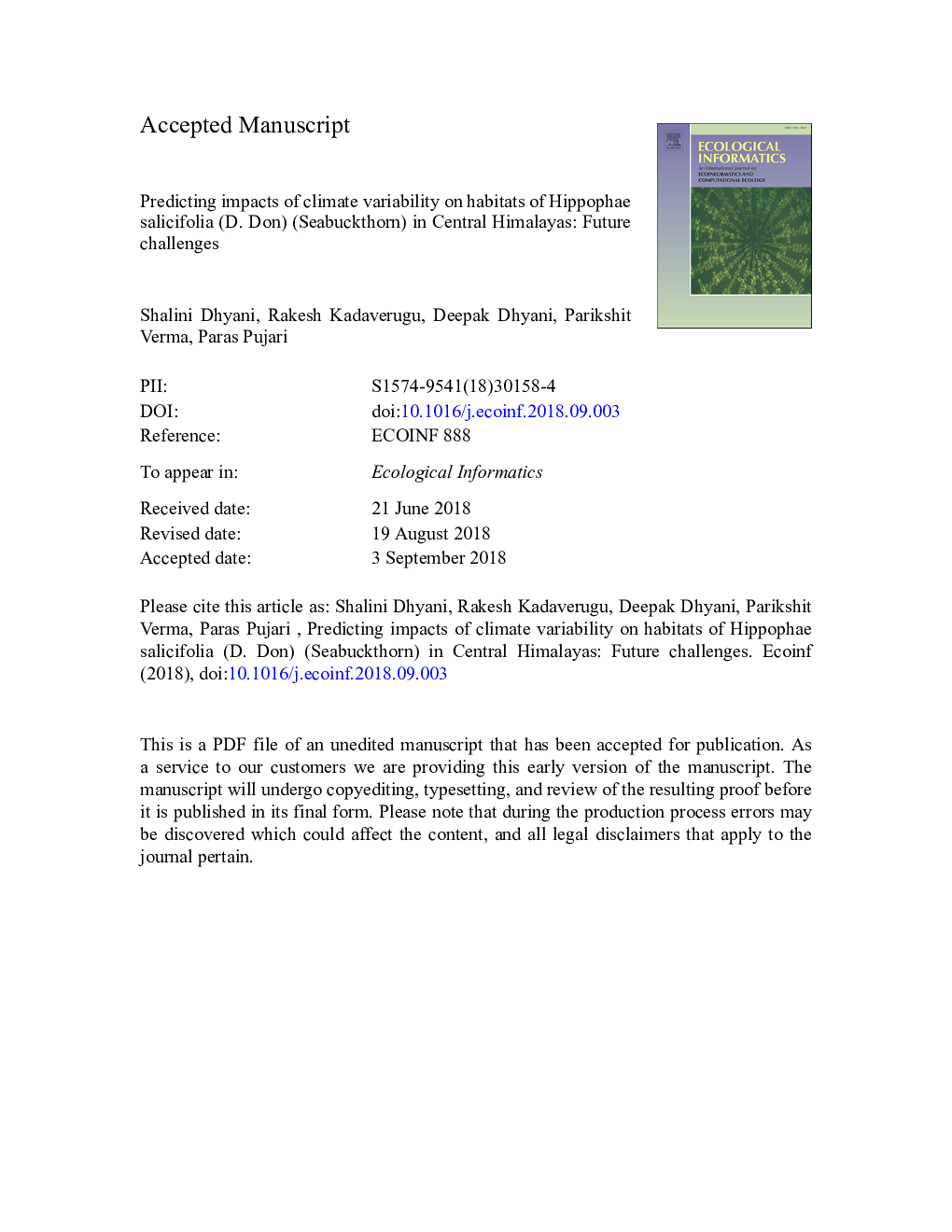| کد مقاله | کد نشریه | سال انتشار | مقاله انگلیسی | نسخه تمام متن |
|---|---|---|---|---|
| 11033382 | 1617187 | 2018 | 42 صفحه PDF | دانلود رایگان |
عنوان انگلیسی مقاله ISI
Predicting impacts of climate variability on habitats of Hippophae salicifolia (D. Don) (Seabuckthorn) in Central Himalayas: Future challenges
دانلود مقاله + سفارش ترجمه
دانلود مقاله ISI انگلیسی
رایگان برای ایرانیان
کلمات کلیدی
موضوعات مرتبط
علوم زیستی و بیوفناوری
علوم کشاورزی و بیولوژیک
بوم شناسی، تکامل، رفتار و سامانه شناسی
پیش نمایش صفحه اول مقاله

چکیده انگلیسی
Climate variability is the most influential driver altering the natural habitats of species leading to worldwide biodiversity loss. Understanding the climatic niche of vulnerable species and predicting its shift due to impending climate change is highly important to assess the damage. It also helps to plan and implement long term ex-situ or in-situ strategies to protect the species and its fragile habitats. Though, various important species of Himalayas are exploited for their economic and medicinal benefits, yet the impact of climate change on species have not been efficiently documented. Present study, is an attempt to understand the impact of climate vulnerability on habitat suitability of Hippophae salicifolia, a multipurpose species that grows particularly on the riparian fronts of river Ganga in Central Himalayas, using species distribution modeling. The Maximum entropy (MaxEnt) model with field observed occurrence locations of the species and CMIP5 (Couple Model Inter-comparison Project) derived bioclimatic variables were used for the study. The predictions were done on the geographic area of Central Himalayas in Uttarakhand state of India according to four IPCC RCPs (Intergovernmental Panel for Climate Change, Representative Concentration Pathways) for the future periods 2050 and 2070. Our results show that the estimated potential (threshold-1) area along the riparian fronts is around 2050â¯km2 for the current period. Whereas, for the future years, the suitable area is likely to be lost by 87% for all climate change scenarios making H. salicifolia highly vulnerable in it' s actual habitats. An upward shift in the habitat of the species by 1700â¯m amsl (2800-4500â¯m amsl) is also predicted. Shift of species from its micro-habitats due to climate reflects unusual patterns and demands the vital need of applying climate adaptive management for habitat conservation. Present study presents a baseline database for broad-scale applicability of riparian front restoration for species conservation.
ناشر
Database: Elsevier - ScienceDirect (ساینس دایرکت)
Journal: Ecological Informatics - Volume 48, November 2018, Pages 135-146
Journal: Ecological Informatics - Volume 48, November 2018, Pages 135-146
نویسندگان
Shalini Dhyani, Rakesh Kadaverugu, Deepak Dhyani, Parikshit Verma, Paras Pujari,